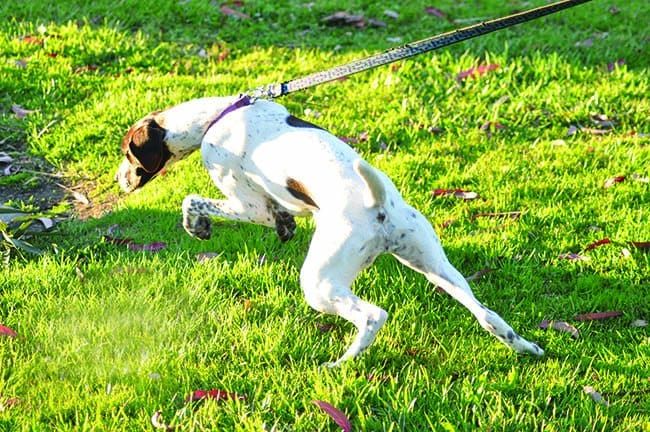
First, of course: Otto my wonder dog. I could not be more thankful for this dog, I really couldn’t. It’s incredible to me that I’ve been lucky enough to have two “heart dogs” in my adult lifetime. Otto and his predecessor (Rupert the Border Collie, who passed away at the age of 14 in late 2003) could not be more different in appearance and temperament, but both of them have been so generously present for me. Both dogs have seen me through some tough times for me and my family, and I’m grateful for their constant companionship, soulful comfort when needed, and readiness for fun and adventure all the rest of the time. Border Collie owners are accustomed to their dogs watching them constantly, and so I accepted the ever-present scrutiny from Rupert, but I have to admit that it is a little unnerving to have a dog with no BC traits whatsoever being so sensitive to so much as a hitch in my breath or my tone of voice as I talk on the phone; Otto detects any emotional instability at all and offers himself to me immediately. “Here I am, pet me, it’s going to be okay,” he seems to say. And so far, with his help, it has been. Thank you, Otto.

Also present: Tito, the Chihuahua who came to spend a few weeks a few years ago. He’s small, he’s loud, and he’ll take on the biggest, baddest dog in town – as long as there is a nice sturdy fence between them. If there is a bigger, cushier dog bed in the room, he’s on it, no matter who he has to menace to get it, and if you are thinking about taking away his bone before he’s done with it – well, let’s just say the only way you are going to get it is with steak, or maybe a tennis ball. He’s an outsized character in a little dog disguise and he’s not here to provide for my emotional comfort or anyone else’s; what’s a guy gotta do to get dinner served, and is that ALL? Sheesh!

Back under my table, unhappily, but making do: Mary, one of my former fosters. No, she’s not being returned – and I’m as sure as the sun will rise tomorrow that’s never going to happen. She’s here because her new owner had emergency surgery last week. She was at work, and felt horrible, and decided she needed to leave work and go to the emergency room. But before she went to the ER, she went home to feed and let the dog outside, because she was afraid that she would be a long time and she didn’t want the dog to be uncomfortable or worried… and that’s probably about the time her appendix ruptured, while she was home, taking care of her dog. I don’t know how she made it from there to the ER, but I do know that people were telling her to let go of her phone as she was being prepped for surgery; I know because she was calling me to ask if I could please go get Mary out of her house and take care of the dog for a few days. Now, I know that Mary has no way of understanding that her owner cares about her so much that she risked her own life in order to take care of Mary’s needs before taking care of her own, but I’ve been trying to explain it to her while giving her as much comfort as I can while her owner recuperates. If we’re all lucky, her owner will be released from the hospital just after Thanksgiving. She and Mary will need no greater celebration than to sleep together again in their own home.
I have two sisters. One of them, the dog-crazy one, lives about four hours away from me. She’s also a chef, and she often cooks Thanksgiving dinner at my house; I have a bigger kitchen, and she has serious skills. This year, she is caring for her husband, who is having hip replacement surgery as I write this, so while ordinarily she and her husband and their three little dogs would be joining us, they, too, are sitting out the holiday to recover from surgery.
Instead, the one person in my family who doesn’t have a dog and doesn’t ever want a dog, my other sister, who lives several large states to the right of me… She’s coming, and bringing a dog. WHAT? Well, it’s her young adult daughter’s little dog, and her daughter is working long hours through the holiday, and so we will be joined by Riot, a darling young Chihuahua with next to zero training. Young adult with new career, working long hours, plus young exuberant dog? I plan to spend the week that my sister will be visiting helping Riot with remedial potty training, a default “sit” (sit when you don’t know what else you should do), and “shush” – what I consider a prerequisite foundation behavior for small dogs. Riot training is scheduled to begin exactly one minute after she arrives.

Sadie, my daughter-in-law’s little dog, a reputed miniature Schnauzer, will be around, but not likely at dinner. I adore her, she’s incredibly sweet, but our “shush” lessons have paid dividends only in small groups. She gets aroused and anxious in crowds, and with all the family members we’re expecting, all bets are off. She is tiny and delicate, but her aroused barking is the most shrill, ear-piercing sound you can imagine. If you could bottle it, you could stop real riots with it. So she’s uninvited, but no skin off her nose, because she lives just blocks away and will be without company for just a few hours. We’ll save her some turkey, I’m sure.
Finally, we will welcome the newest member of the family: just days ago, my husband’s brother and sister-in-law adopted Rosie, a three-year-old Boxer from a Boxer rescue group. She’ll get preferential treatment and management, to protect her from being overwhelmed with the travel and rapid changes in venue. I’ll check her ID tag as soon as she gets here, to make sure it has my in-laws’ cell numbers on it (this often gets overlooked in all the excitement of adoptions) and will put up special “Close the gate!” signs on all of my yard gates. Newly adopted dogs are at super high risk of bolting in the first week or two, so we will be super careful.
Have a happy and safe Thanksgiving! And please give your dogs a little treat, not too fatty, from all of us at WDJ.









